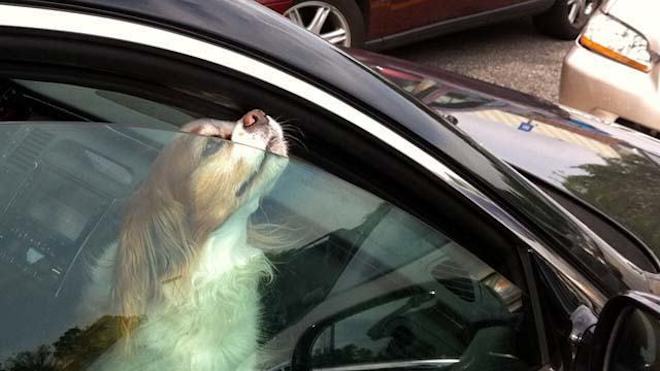Canine Degenerative Myelopathy: Symptoms, Treatment and Management
Degenerative Myelopathy (DM), sometimes referred to as CDRM (Chronic Degenerative RadiculoMylopathy), is a fatal, neurodegenerative disease characterized by a general lack of coordination of muscle movements in the pelvic limbs. Dogs affected slowly lose control and function of their hind limbs. Dogs diagnosed with DM have axonal (a part of a nerve cell, or neuron) and myelin (an electrically insulating layer around an axon, also known as the myelin sheath) degeneration at all levels of the spinal cord.
As motor neurons degenerate, they can no longer send electric impulses to the muscle fibers that normally result in muscle movement. When muscles no longer receive the messages from the motor neurons that they require to function, the muscles begin to atrophy (become smaller). Limbs begin to look “thinner” as muscle tissue atrophies. In the later stages of the disease, limbs may become totally paralyzed.
Age at Onset: DM affects adult dogs typically over the age of 8 years. DM has been detected in dogs as young as 3 years.
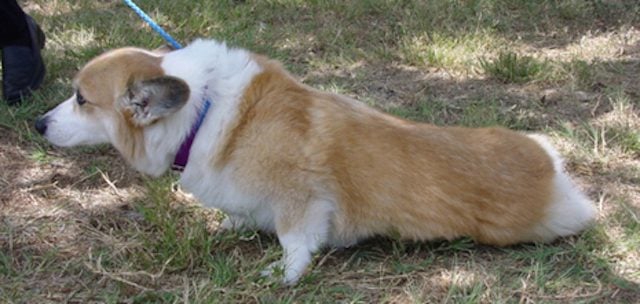
Breeds Affected: The German Shepherd dog (GSD or Alsatian) is the breed most commonly affected however it is also seen in many other breeds.
- Alaskan Malamute
- American Eskimo Dog
- Belgian Sheepdog
- Bernese Mountain Dog
- Boxer
- Cardigan Welsh Corgi
- Chesapeake Bay Retriever
- German Shepherd Dog
- Golden Retriever
- Great Pyrenees
- Kerry Blue Terrier
- Lancashire Heeler
- Old English Sheepdog
- Pembroke Welsh Corgi
- Poodle
- Pug
- Rhodesian Ridgeback
- Shetland Sheepdog
- Soft Coated Wheaten Terrier
- Weimaraners
- Wire Fox Terrier
DM progresses slowly, so sudden onset of disease symptoms may indicate another cause for these signs. Although variable in presentation and course, generally, Dogs with DM typically require mobility assistance within 9 months of the first onset of symptoms. Symptoms can progress to paralysis in 3-6 months when untreated.
- hindquarter weakness
- lack of coordination of muscle movements in the limbs
- loss of balance
- difficulty rising or laying down
- knuckling under while walking
- limp tail
- rear legs crossing under body
- rear leg drag
- lack of coordination of muscle movements in the spine
- hoarseness of bark
- paralysis
- incontinence
For a more detailed list of symptoms, see the “Symptoms” section below.
Genetics of DM
To date, a single gene called SOD1 (superoxide dismutase 1) is associated with DM. One study showed that dogs that had mutations in both copies of their SOD1 genes were strongly associated with the clinical diagnosis of DM. Although all dogs clinically diagnosed with DM under strict guidelines had mutations in both SOD1 genes, not all of the dogs carrying two copies of the mutated SOD1 gene displayed symptoms of DM. Thus, DNA tests analyzing the SOD1 gene alone cannot definitively determine whether a patient will present with degenerative myelopathy.
Canine DM is similar to Amyotrophic lateral sclerosis (ALS) in Humans: Similar to DM in dogs, ALS, also known as Lou Gehrig’s Disease, in humans refers to a progressive neurodegenerative disease that affects nerve cells in the brain and the spinal cord. Early symptoms of ALS often include increasing muscle weakness, especially involving the arms and legs, speech, swallowing or breathing. With voluntary muscle action progressively affected, patients in the later stages of the disease may become totally paralyzed.
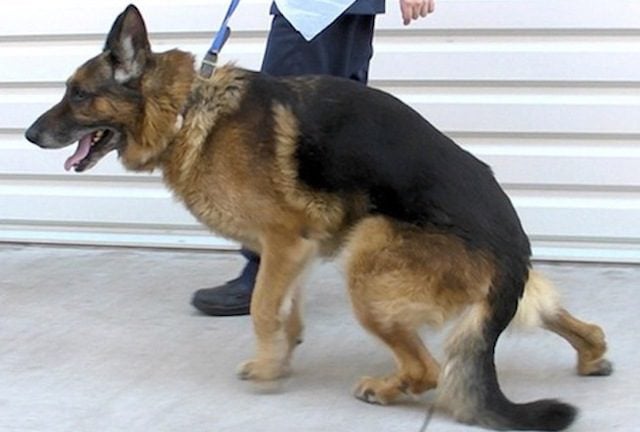

ALS is directly hereditary in only a small percentage of families. Although there is likely a genetic predisposition involved in 90% of adult-onset ALS, no family history of ALS exists with these patients, and they present as an isolated case. This is called sporadic ALS (SALS) because of the lack of direct inheritance in a family. In 10% of persons with ALS have a close second family member with ALS, which is referred to as familial ALS (FALS). Currently the best tool to distinguish between SALS and FALS is the family history.
The SOD1 gene in dogs and humans: Just as the SOD1 gene plays as role in canine DM, the human version of the SOD1 gene has been implicated in FALS. Changes in the SOD1 gene on chromosome #21 have been found in about 20% of families with FALS.
Symptoms
DM is a condition that progresses slowly and typically affects dogs 8 years of age or older. DM has been detected in dogs as young as 3 years. If you observe a sudden onset of disease symptoms in your dog, this may indicate that another condition is the cause for muscle or movement problems. Although variable in presentation and course, generally, Dogs with DM typically require mobility assistance within 9 months of the first onset of symptoms. Symptoms can progress to paralysis in 3-6 months when untreated. DM is not a painful disease, so if your dog is exhibiting pain, this may indicate that another condition is the cause or that a concurrent problem exists.
The first symptoms of DM include:
- subtle weakness of one pelvic limb
- the weakness progresses in the hind limb and displays as a tendency for the limb to be dragged
- dragged rear paws will show unevenly worn toenails (inner nails will be more worn than outer nails)
- the other hindlimb becomes affected within weeks to months
- uncoordinated or drunken gait
- loss of balance
- exaggerated movements, such a high stepping when going up a curb
- tendency to fall when cornering
- affected dogs are often keen to exercise despite disability
- no indication of spinal pain
- dogs may be able to run, in a bunny-hopping gait, more easily than they can walk or climb
At this point, dogs affected with DM will have a strong knee jerk reflex (hyperactive patella spinal reflex) when examined by a veterinarian or neurologist. This is consistent with disease of the spinal cord between the third thoracic vertebrae and the third lumbar vertebrae. Defects in proprioceptive functions lead to the unevenly worn toenails, and can be seen in a typical neurological test (in this linked example, the dog does not have DM, but the photo and video show defects in the dog’s proprioceptive pathways. This is exactly the same symptom that DM dogs display).
As the disease progresses, the DM dogs present with the following symptoms:
- decreased ability to walk
- difficulty in supporting their own weight
- difficulty rising or laying down
- knuckling under while walking
- limp tail; longer tail will easily get tangled with the dog’s legs
- rear legs crossing under body
- lack of coordination of muscle movements in the spine
- hoarseness of bark
- loss of knee jerk reflex
- faecal incontinence
- sudden profound muscle weakness; immobility and paralysis (flaccid tetraparesis)
The presentation of the disease can vary between different dog breeds with some of them (e.g. Corgi and Rhodesian Ridgeback) having more obvious disease of the (lower) motor neuron rather than the spinal cord.
Treatment
Standardized medical treatment guidelines currently do not exist for patients diagnosed with Degenerative Myelopathy (DM), and unfortunately, there is no cure for DM.
Because there seems to be an immune mediated component of DM, some DM dogs with acutely deteriorating cases can benefit from short courses of corticosteroids at anti-inflammatory (low) doses. These drugs should not be taken concurrently with non steroidal anti-inflammatory drugs.
Please note: this article was originally written in 2011. There may be newer diagnosis and treatment options currently available. Please consult with your veterinarian for the latest in treatment and care options available for DM. This article is for information purposes only and is not intended, nor should it be used, as a substitute for the professional medical advice of your veterinarian.
Diagnosing DM
DM is a non-surgical disease. Myelograms are used to rule out surgical disease, however they do not rule in DM. Before a myelogram is undertaken, giving an Electromyogram (EMG) is recommended because it can be better to start testing for DM with the least invasive tests, leaving the more serious tests for last. EMG results can differentiate between peripheral nerve disease, inter-vertebral disc disease and myelitis and polyradiculoneuropathy.
Treatment in Humans
Treatment in humans for the equivalent disease (Amyotrophic lateral sclerosis or ALS) is also mainly supportive and palliative. Riluzole is the only drug that has been shown to extend survival, however the safety and efficacy of use of this drug in dogs has not been tested. Furthermore, Riluzole is very expensive.
Due to the lack of standardized medical treatment guidelines for patients diagnosed with Degenerative Myelopathy (DM), treatment is mainly supportive and palliative. Nutrition, exercise, therapy and mobility aides have all been recommended in managing DM dogs.
Management
Note: Please consult with your veterinarian before employing any nutritional or dietary changes in regards to treatment for DM. The information provided in this article is for informational purposes only
Nutrition
DM dogs in the early stages of the disease may benefit from diet supplements such as Vitamin E, Omega-3-fatty acids, Gamma linoleic acid and L-Carnitine. These supplements are free radical scavengers that may help prevent nerve damage from free radical injury. This type of injury can occur due to the nature of the disease. Dogs with DM have a mutation in the gene encoding superoxide dismutase-1 (SOD1), which results in overproduction of damaging reactive oxygen species (ROS). These ROS cause oxidative or free radical injury. See the Overview for more information on the genetics of DM.
Exercise
Keeping the dog active has been shown to slow deterioration, so maintaining a regular walking and other exercise schedule is important. Consulting with a chartered physiotherapist with the aim of learning techniques to maximize remaining ability and neurological function has also been recommended.
Hydrotherapy
If possible, hydrotherapy is also recommended, preferably also under the guidance of a chartered physiotherapist. If the dog has a degenerative joint disease, such as arthritis, or other spinal disease, then this should also be managed so that pain does not limit activity.
Mobility Aides
Several methods of handling DM dogs are not recommended. Never hold or attempt to hold a DM dog up by its tail. Holding a DM dog up, supporting it, or lifting it by the tail can break the tail and cause great harm to the dog. Towel walking, (placing a towel under a dog’s abdomen to help carry a dog’s hindquarters) is also not advised, as it can place pressure on the bladder, causing the dog to urinate. In addition, booties on the feet are not a good idea, due to the fact that booties interfere with foot placement and the conduction of nerve impulses. A DM dog with booties is apt to fall more often and suffer consequences such as cruciate ligament tears, knee injuries, disk injuries and further spinal damage.
Methods and aides that are recommended include walking the dog on grassy surfaces and using carts, rear end harnesses or Toe-up Siatic slings.
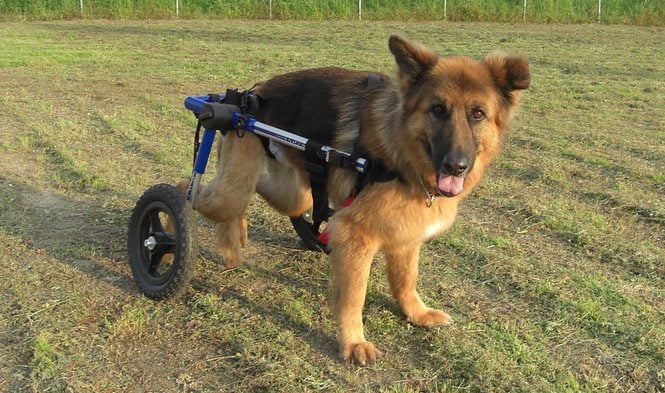

Carts (or dog wheelchairs) are becoming increasingly more common at dog parks. While many people elect to euthanize their pet when the dog is unable to support themselves to stand or walk, some people feel that a quality of life can be maintained by using a canine cart. The dog can enjoy the outdoors, going for a walks and socializing. However depending on the size of the dog and corresponding cart, managing DM using canine carts can be problematic. If the DM dog’s forelimbs are weak, then a cart is unlikely to be suitable option.
A canine cart for dogs with DM offers independent exercise and socialization.
Rear end harnesses allow lifting of the hindquarters into a position for correct foot placement. Rear end harnesses were created for the purpose of lifting a DM dog safely. Several different types of rear end harnessesare available:
- Help Me Up Harness: A complete shoulder and hip harness system that can be used for front and rear disabilities, offering support under the pelvic floor.
- Hartman’s Hip Helper Harness: An excellent harness for larger dogs that centers the walker over the dog’s back and can be used in conjunction with a cart.
- Ginger Lead Dog Rear Support Harness: A combination sling and leash for dogs needing a rear assist.
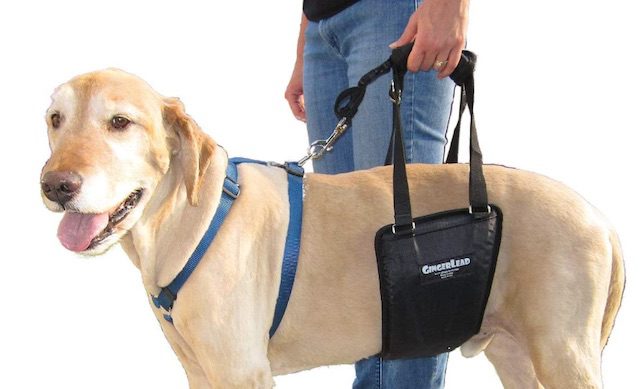

- Walkabout Harness – Medium/Large: A neoprene panty attached to long handles make this a great manual assist for short legged dogs.
Toe up Siatic slings can improve the walking ability of some dogs. It is developed to assist those dogs who suffer from hind paw knuckling.
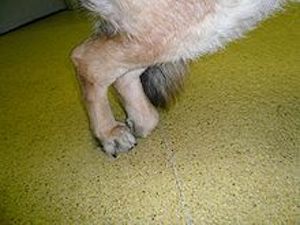

The sling prevents knuckling by supporting the 2 centre digits, and is attached via an adjustable elastic cord to a strap on the hock. OrthoPet’s Toe-Up Sciatic Sling has been developed to assist those dogs who suffer from hind paw knuckling.
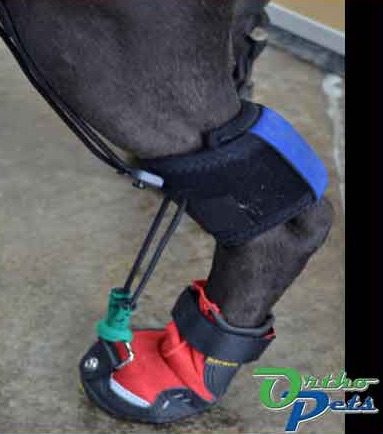

As with any medical condition affecting the long-term health of your dog, we recommend ongoing consultation with your veterinarian to discuss strategies and treatment plans as the disease progresses.
References:
Awano et al. Proc Natl Acad Sci U S A. 2009 Feb 24;106(8):2794-9. Epub 2009 Feb 2.
Rosen et al. Nature. 1993 Mar 4;362(6415):59-62 Erratum in: Nature. 1993 Jul 22;364(6435):362.
Dion et al. Nature Reviews Genetics 10, 769-782 (November 2009)
ALS Association
The content is not intended to be a substitute for professional medical advice, diagnosis, or treatment. Always seek the advice of your veterinarian or other qualified health provider with any questions you may have regarding a medical condition.


